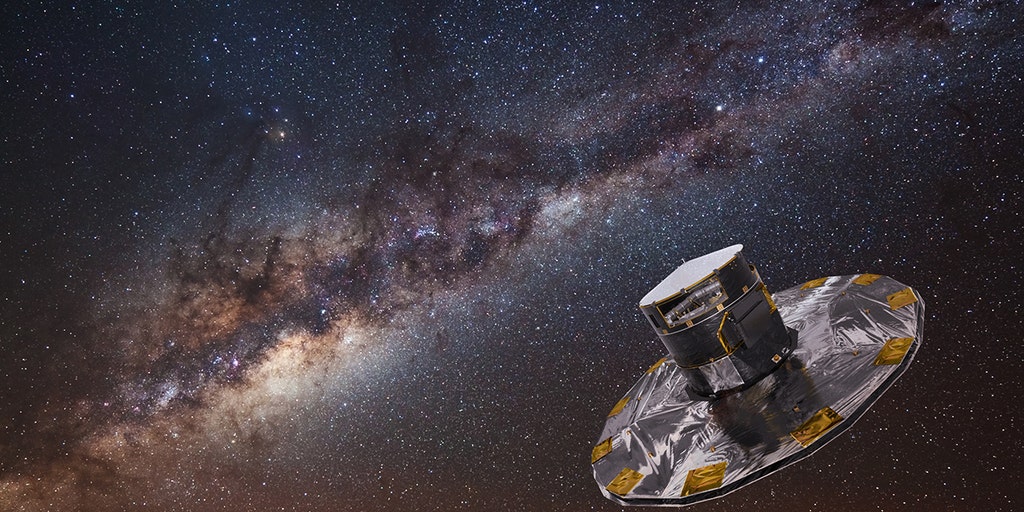FILE – New survey of Milky Way galaxy reveals tapestry of billions of celestial objects
Astronomers have announced the results of a major survey of the plane of the Milky Way galaxy.
Even large spacecraft tasked with mapping the stars must deal with the dangers of space.
by European Space AgencyThe Milky Way’s “billion-star survey” satellite Gaia was hit by a high-speed micrometeoroid “smaller than a grain of sand” in April and then hit by the strongest solar storm in 20 years. Aurora borealis shining on Earth in MayThis compromised the spacecraft’s precision measurement capabilities.
Gaia, which launched in December 2013, is located approximately 932,000 miles from Earth.
Cosmic dance of ‘Penguin’ and ‘Egg’ galaxies marks James Webb Telescope’s second anniversary
Gaia mapping the stars of the Milky Way. (ESA/ATG Media Lab, Background: ESO/S. Brunier)
Millions of these particles burn up in Earth’s atmosphere every day, so an impact like this on a satellite so far from Earth is expected. According to the ESA, the spacecraft was designed to withstand such an impact, but the micrometeorite struck Gaia at just the wrong angle, damaging the spacecraft’s protective covering.
Scientists say the impact could create a tiny gap through which stray light about a billionth of the intensity of direct sunlight on Earth could seep in and confuse Gaia’s sensitive sensors.
Astronauts remain trapped in space after Hurricane Beryl delayed return to Earth
ESA’s Malargüe Deep Space Ground Station. (Filippo Concaro/ESA)
After the impact, an explosion of high-energy particles from a solar storm in May likely caused electronics to malfunction, causing Gaia to record thousands of false positives and transmit so much data that it overwhelmed systems on Earth.
ESA said the storm may have been the final blow for the spacecraft’s aging hardware.
Ten years ago, ESA’s billion star mapping satellite Gaia was launched. Since then, Gaia has been scanning the skies, collecting vast amounts of data on the positions and movements of 1.8 billion stars, enabling numerous discoveries about the history of our galaxy. (ESA)
Since then, scientists and engineers have been able to tweak the instrument to reduce the number of false positives, and the satellite has resumed normal operations.
Gaia was designed to spend up to six years in space, but survived in the harsh conditions for almost twice that long, according to the ESA.


